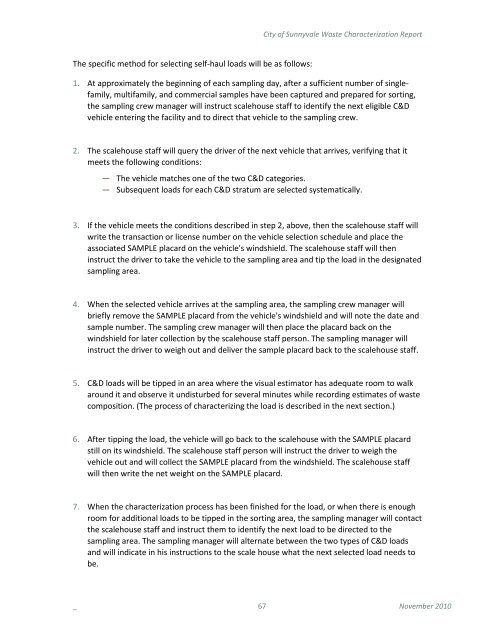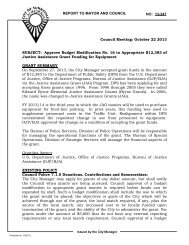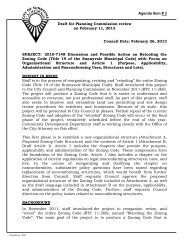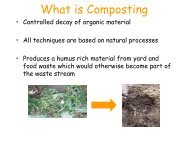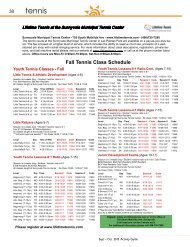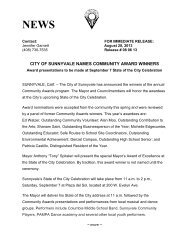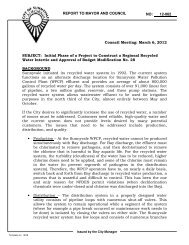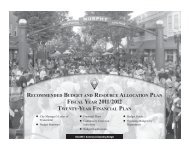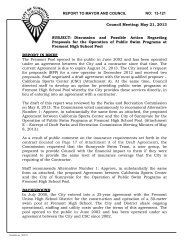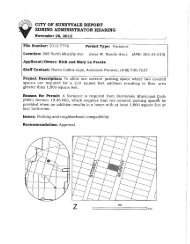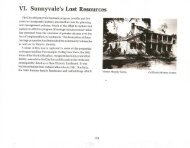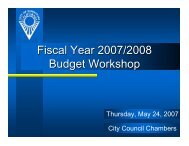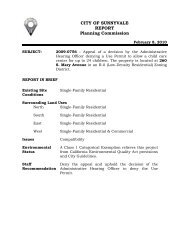City of Sunnyvale Waste Characterization Report
City of Sunnyvale Waste Characterization Report
City of Sunnyvale Waste Characterization Report
Create successful ePaper yourself
Turn your PDF publications into a flip-book with our unique Google optimized e-Paper software.
The specific method for selecting self-haul loads will be as follows:<br />
<strong>City</strong> <strong>of</strong> <strong>Sunnyvale</strong> <strong>Waste</strong> <strong>Characterization</strong> <strong>Report</strong><br />
1. At approximately the beginning <strong>of</strong> each sampling day, after a sufficient number <strong>of</strong> singlefamily,<br />
multifamily, and commercial samples have been captured and prepared for sorting,<br />
the sampling crew manager will instruct scalehouse staff to identify the next eligible C&D<br />
vehicle entering the facility and to direct that vehicle to the sampling crew.<br />
2. The scalehouse staff will query the driver <strong>of</strong> the next vehicle that arrives, verifying that it<br />
meets the following conditions:<br />
— The vehicle matches one <strong>of</strong> the two C&D categories.<br />
— Subsequent loads for each C&D stratum are selected systematically.<br />
3. If the vehicle meets the conditions described in step 2, above, then the scalehouse staff will<br />
write the transaction or license number on the vehicle selection schedule and place the<br />
associated SAMPLE placard on the vehicle's windshield. The scalehouse staff will then<br />
instruct the driver to take the vehicle to the sampling area and tip the load in the designated<br />
sampling area.<br />
4. When the selected vehicle arrives at the sampling area, the sampling crew manager will<br />
briefly remove the SAMPLE placard from the vehicle's windshield and will note the date and<br />
sample number. The sampling crew manager will then place the placard back on the<br />
windshield for later collection by the scalehouse staff person. The sampling manager will<br />
instruct the driver to weigh out and deliver the sample placard back to the scalehouse staff.<br />
5. C&D loads will be tipped in an area where the visual estimator has adequate room to walk<br />
around it and observe it undisturbed for several minutes while recording estimates <strong>of</strong> waste<br />
composition. (The process <strong>of</strong> characterizing the load is described in the next section.)<br />
6. After tipping the load, the vehicle will go back to the scalehouse with the SAMPLE placard<br />
still on its windshield. The scalehouse staff person will instruct the driver to weigh the<br />
vehicle out and will collect the SAMPLE placard from the windshield. The scalehouse staff<br />
will then write the net weight on the SAMPLE placard.<br />
7. When the characterization process has been finished for the load, or when there is enough<br />
room for additional loads to be tipped in the sorting area, the sampling manager will contact<br />
the scalehouse staff and instruct them to identify the next load to be directed to the<br />
sampling area. The sampling manager will alternate between the two types <strong>of</strong> C&D loads<br />
and will indicate in his instructions to the scale house what the next selected load needs to<br />
be.<br />
_ 67 November 2010


